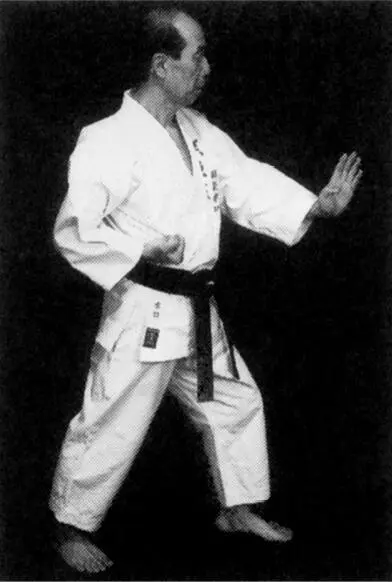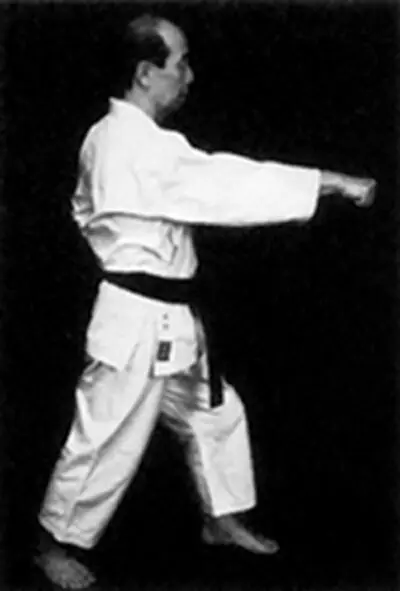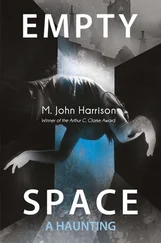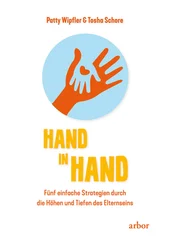The masters of the Jigen style were said to be able to cut raindrops falling from the roof three times before they hit the ground. To train the mental concentration necessary to carry out such ultra high-speed strikes, a special training method was used called “hitting a standing tree” (tachi ki uchi). Partner exercises were not part of the training. Instead, a branch of a Yusu tree was cut and used as a wooden sword to hit a wooden block diagonally from left to right with a loud kiai. “Hitting a standing tree” became the incentive for master Matsumura to invent the training method “hitting the punching board” (makiwara zuki), which is still widely used in traditional karate. As mentioned above, master Itosu, who had been taught by master Matsumura, practiced this on a regular basis38
Master Nakayama Hiromichi (1869-1958), who was called the “Musashi of the Shōwa period” or the “Last of the Sword Saints”, wrote the following words: “Karate turns the empty hand into a sword. This is not a mere metaphor. The karate fist is definitely a sword.”
In historical plays or movies one can often see the opponents hitting each other fiercely and endlessly. Japanese call this chanbara.39In reality this is only possible if the opponents are wearing head and body protectors like in kendō, hitting each other several times while always keeping the right distance. In case of a real fight, the moment when the sword is drawn is decisive for victory or defeat. The first strike will decide whether one will die or live on. There is no second chance. Even if the first strike does not contain the energy of a Jigen strike, it will be deadly.
The fact that master Matsumura perfectly mastered the Jigen sword technique, the favorite style of the Satsuma samurai, has decisively marked the development of the Shuri-te. These samurai who occupied Okinawa since 1609 were the enemies each native Okinawan had in mind while practicing the hand fighting techniques. There is no doubt that it was master Matsumura who shaped karate according to the basic principle to kill the enemy with the first punch or kick.
The masters of Shuri-te took up the idea of a “deadly first strike”. But there is no such idea in Chinese kempō where the ruling principle is called “searching for the hands and legs” (tanshu tantai), that is first testing the technical abilities of the opponent and studying each other. The opponents begin from higher positions (kamae), reduce the distance step by step and finally adopt lower kamae. After each clash the opponents retreat. Then they approach and fight again so that in this way a rather spectacular and dramatic action develops. But this is only possible because in Chinese kempō the empty hand is not a sword.
On the opposite, karate is a martial art developed to defend oneself against an enemy who could be assumed of being educated in the Jigen style and able to carry out the first strike on the “cloud-of-flames” level. It was a question of survival to correctly evaluate the first strike of the swordsman and at the same time to instantly perform the deadly strike. So it can be said that master Matsumura and master Itosu perfected the Shuri-te under the influence of the Japanese sword techniques, in particular that of the Jigen style.
Drawing a Circle With a Straight Line
In Chinese kempō, the basic movement is the circle. In boxing and kickboxing, too, all kicks and punches are carried out as circular movements. Under the influence of these techniques in the post-war era, the karate movements have become circular, too.
Some time ago a student showed me a book titled The Secrets of Okinawan Karate: Essence and Techniques written by Arakaki Kiyoshi. This author also had edited writings left by my father in the monthly journal Karate Dō as a series titled Karate Sankoku Shi. His book was very interesting to me. He wrote: “The essence of Japanese budō can be described as drawing a circle with a straight line.” I was very impressed by this sentence because it expresses with words what I feel with my whole body. In iaidō40 it can be well observed that the arms are drawing a straight line forward while the sword is carrying out a circle. That means that a straight line describes a circle. It is also true that the Jigen ryū “flame cloud” speed that is reached when the sword hits the target cannot be obtained with a circular movement alone. According to master Arakaki, the maximum energy generated by the circular motion is transferred to the target via a straight line that is the shortest possible distance. This technique of the Japanese budō represents the highest level of body perfection.
 Photo 5
Photo 5
 Photo 6
Photo 6
 Photo 7
Photo 7
Photos 5 to 7: The execution of a punch. The fist is in the back position close to the hip (hikite) (5). It comes from the hikite position (6), and a thrust is carried out in an absolutely straight line (7).
It is not the hardening of the hands and their transformation into weapons what makes the difference to Chinese kempō. It is the kind and perfection of body control in the moment of thrusting and kicking which mobilizes the whole body. When we observe the thrust movement of the fist, we can see that unlike the curved line in boxing, the thrust is carried out in an absolutely straight line by bringing the fist forward out of its back position (hikite) (see photos 5 to 7). Kicking too, is not carried out in wide curved lines or circles as in Chinese kempō or in kickboxing. The karate kick goes straight into the target. Therefore the energy is generated from a circular movement by bending the leg inwards and swinging it up. Then the circle is drawn with a straight line (see photos 8 to 10).
 Photo 8
Photo 8
 Photo 9
Photo 9
 Photo 10
Photo 10
Photos 8 to 10: Execution of a kick. Taking the basic position or ready stance (kamae) (8). The leg is bent and then swung upwards (9). The kick is carried out in a straight line (10).
It may be surprising, but in the traditional karate kata there is no roundhouse kick (mawashi geri) and no kick in the upper level (jōdan geri). However, there are jumped kicks (tobi geri), but they are only used as final falling or sacrifice techniques (sutemi). Kicking in wide, curved lines causes instability because it opens the own weak points to the enemy. It is too slow when fighting against a swordsman or other armed opponents and does not provide deadly first strike ability. Besides this, kicking may easily become ineffective if the opponent is physically stronger.
 Photo 11
Photo 11
Читать дальше

 Photo 5
Photo 5 Photo 6
Photo 6 Photo 7
Photo 7 Photo 8
Photo 8 Photo 9
Photo 9 Photo 10
Photo 10 Photo 11
Photo 11










